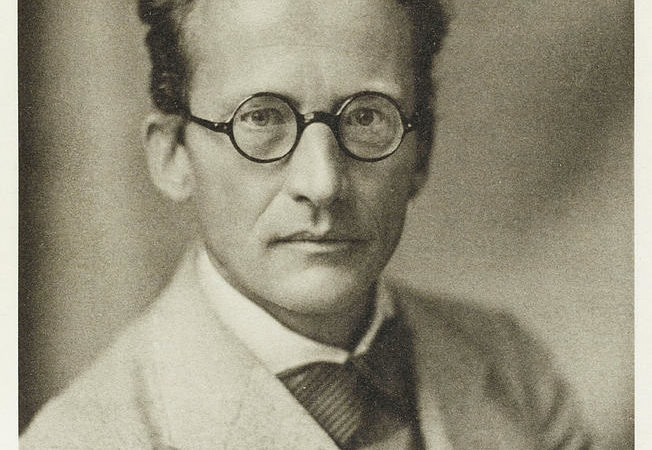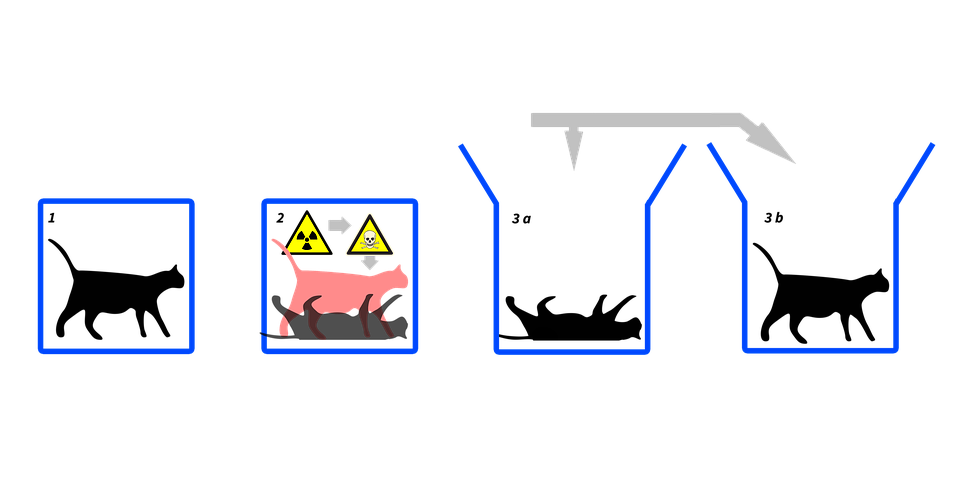Who was Erwin Schrödinger?
by Ailsa Harvey · 19/09/2020
Introducing the influential physicist whose cat controversy made waves across the science community

(Image credit: Nobel Foundation)
When you think about Austrian physicist Erwin Schrödinger, your mind may first turn to his famous thought experiment surrounding a poisoned cat in a box. However, as part of his contributions to quantum mechanics, he is often most celebrated for devising the ‘Schrödinger equation’.
During the 1920s, the field of quantum mechanics emerged, along with a race involving all the top scientists to find ways to describe and explain the motion of some of the smallest building blocks of the universe. Schrödinger’s scientific capabilities had evolved through studying and working at multiple top universities alongside the likes of Albert Einstein. It was while he was working as a professor at the University of Zurich that he delved deep into the research of theoretical physics, allowing him to piece together some of the most important models of his career.
The first of his major breakthroughs came when he began studying the different energy states of electrons in an atom. Using a previous hypothesis that particles in an atom move in waves – similar to the movement of light waves – Schrödinger was the first person to organise data into an equation to prove how this happened. The equation is often compared to Newton’s law of motion in its level of importance to quantum mechanics.
Used across physics and chemistry, Schrödinger’s equation is used to deal with any issues regarding atomic structure, such as where in an atom electron waves are found. Additionally, his wave equation demonstrated superposition: a state that includes all possible solutions. Because his equation was linear and had more than two changeable factors, it created a range of possible outcomes.
Revolutionising the way quantum mechanics was visualised, Schrödinger focused again on superposition in his most renowned thought experiment. For this, he asked people to imagine a cat inside a sealed container. Trapped alongside the cat is a Geiger counter, poison, a hammer and a radioactive substance. In this situation, due to the random process in which the radioactive substance will decay, there is no way of knowing when this will happen. When it does, the activity will be detected by the Geiger counter, which will trigger the hammer to release the poison and eventually lead to the death of the cat.
As this process cannot be seen, the cat can’t be definitively pronounced dead or alive. For this reason, Schrödinger explained that it must be assumed that the cat is in two states – living and deceased – until the box is opened and its contents revealed.
Later on in his life, Schrödinger went on to publish academic books and journals. In one of his most well-known, called What is Life?, he used his expertise in quantum physics to delve into the world of biology and explore how his findings could explain the stability of genetic structure. While later developments and research in this area have led to adaptations of his findings, his work still holds great use in introducing students to quantum mechanics.
Across the board of Schrödinger’s experiments, thought processes and scientific writing, he is one of the highest regarded physicists of his time. Acknowledged during his life through prestigious awards and general science development, his studies continue to influence the worlds of both science and philosophy to this day.

(Image credit: Gerd Altmann/Pixabay)
What was the point behind the cat?
Through his thought experiment, in which the contained cat could be dead or alive, Schrödinger was presenting a principle of quantum mechanics in a way most people could comprehend. He wanted to make people understand the flaws in quantum superposition when taken out of general equations and placed in real-world scenarios. The theory states that objects in a tangible system can exist physically in all possible forms until proven otherwise.
Schrödinger applied this concept to his cat interpretation to explain its unrealistic actuality. He believed that while the outcome was a logical one, elements of it were also irrational. Schrödinger showed how misinterpreting quantum theory – in evaluating objects to be in two states rather than two possibilities – isn’t justifiable when realistically there is only one actuality. He allowed people to visualise that only one outcome can be taking place – even when no one is there to observe.
This article was originally published in How It Works issue 133, written by Ailsa Harvey
For more science and technology articles, pick up the latest copy of How It Works from all good retailers or from our website now. If you have a tablet or smartphone, you can also download the digital version onto your iOS or Android device. To make sure you never miss an issue of How It Works magazine, subscribe today!





